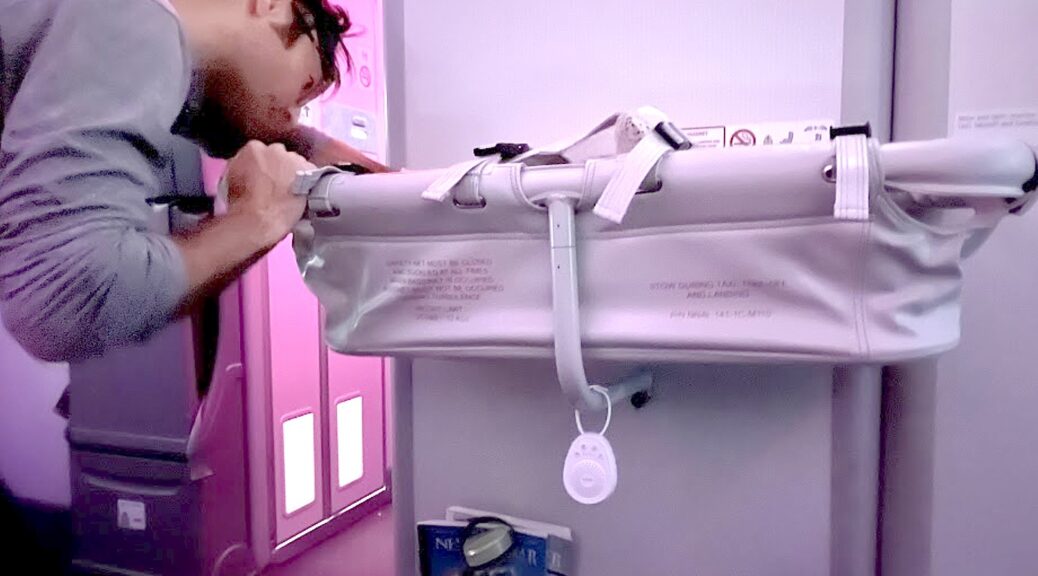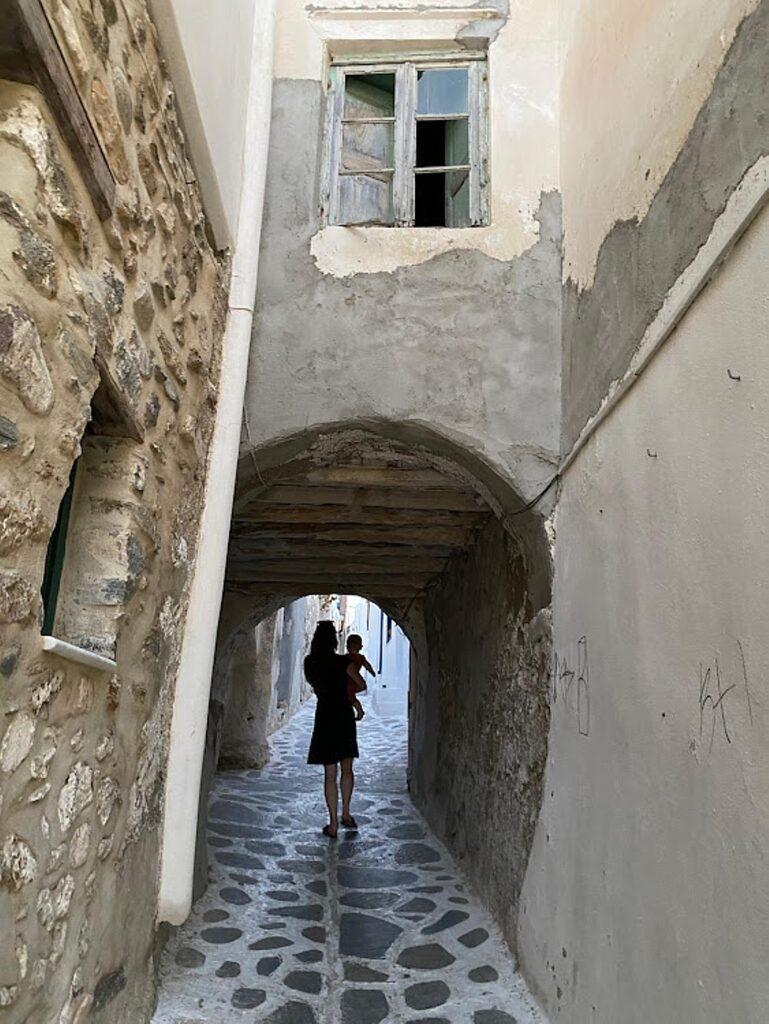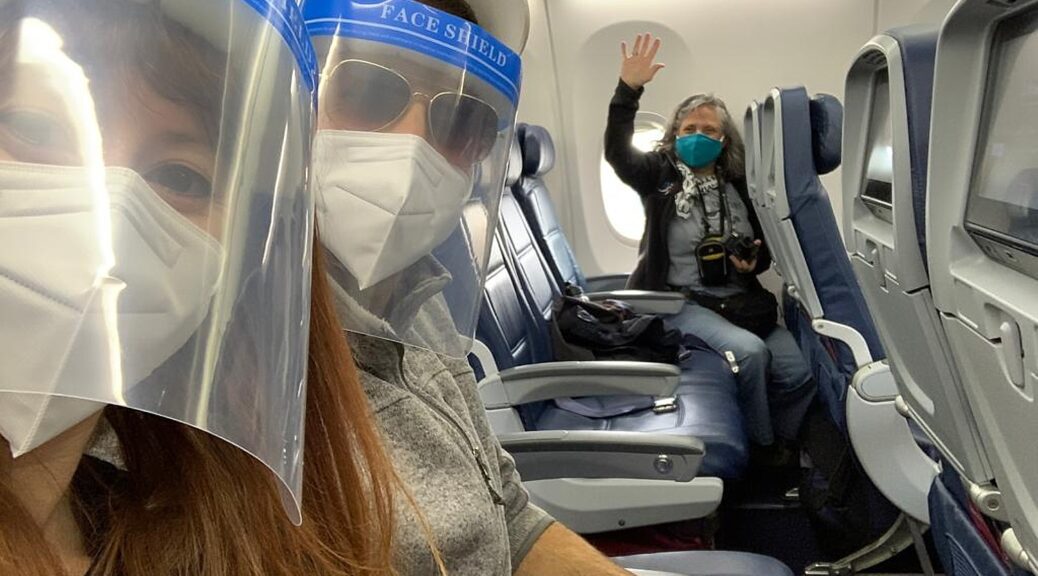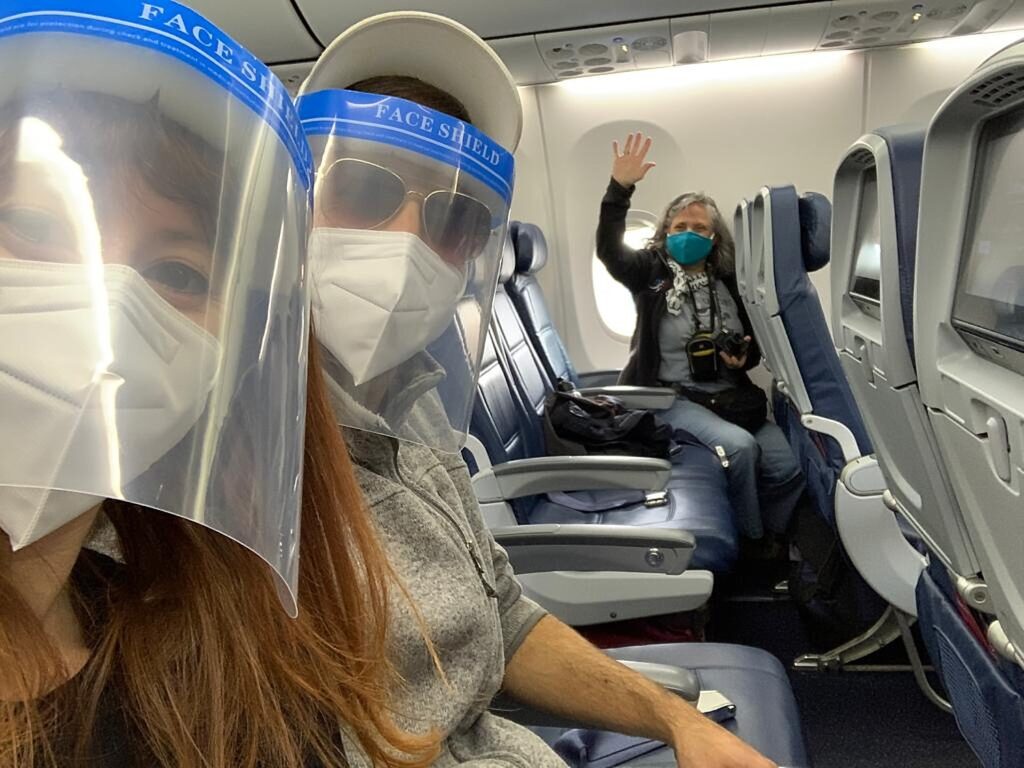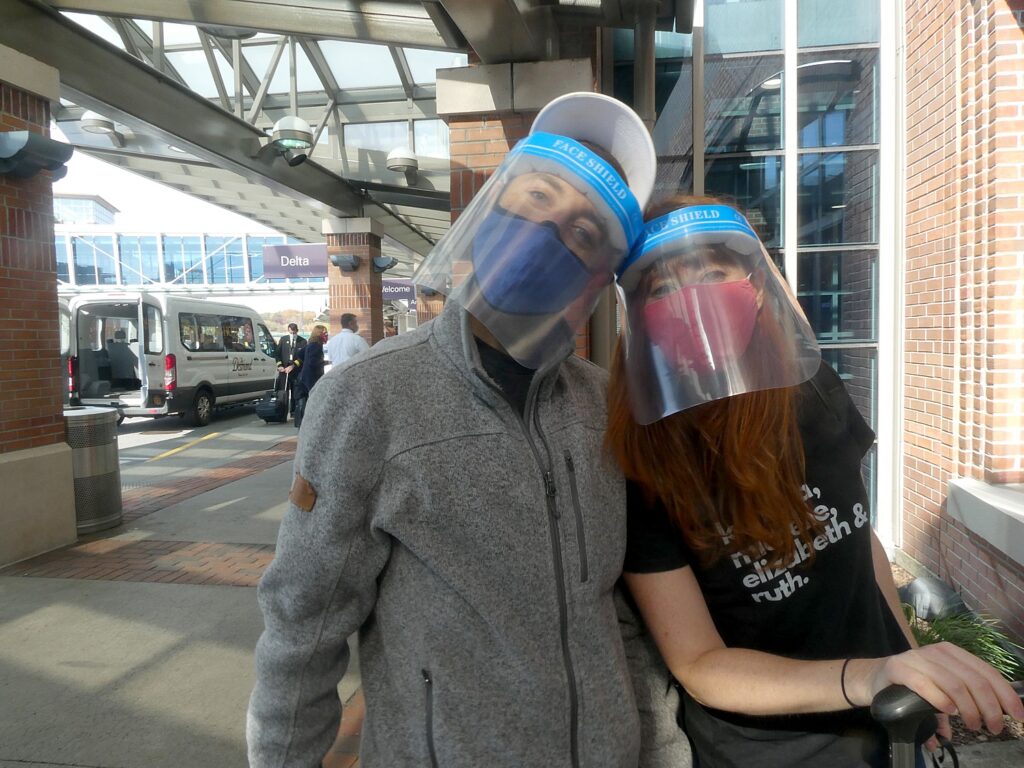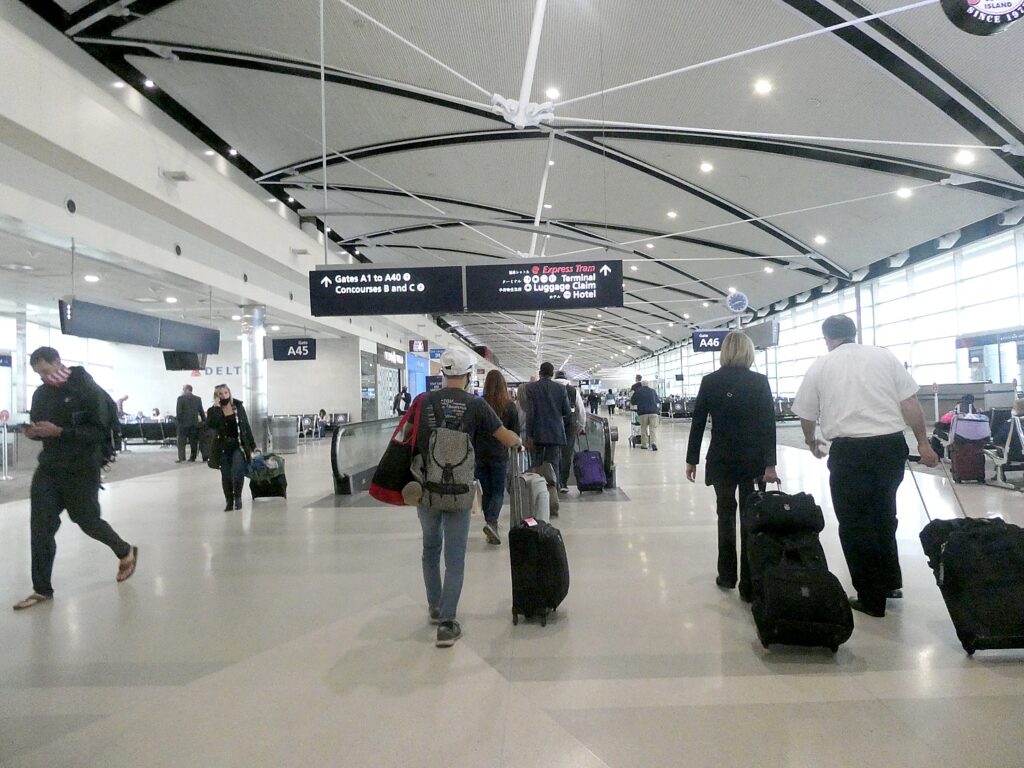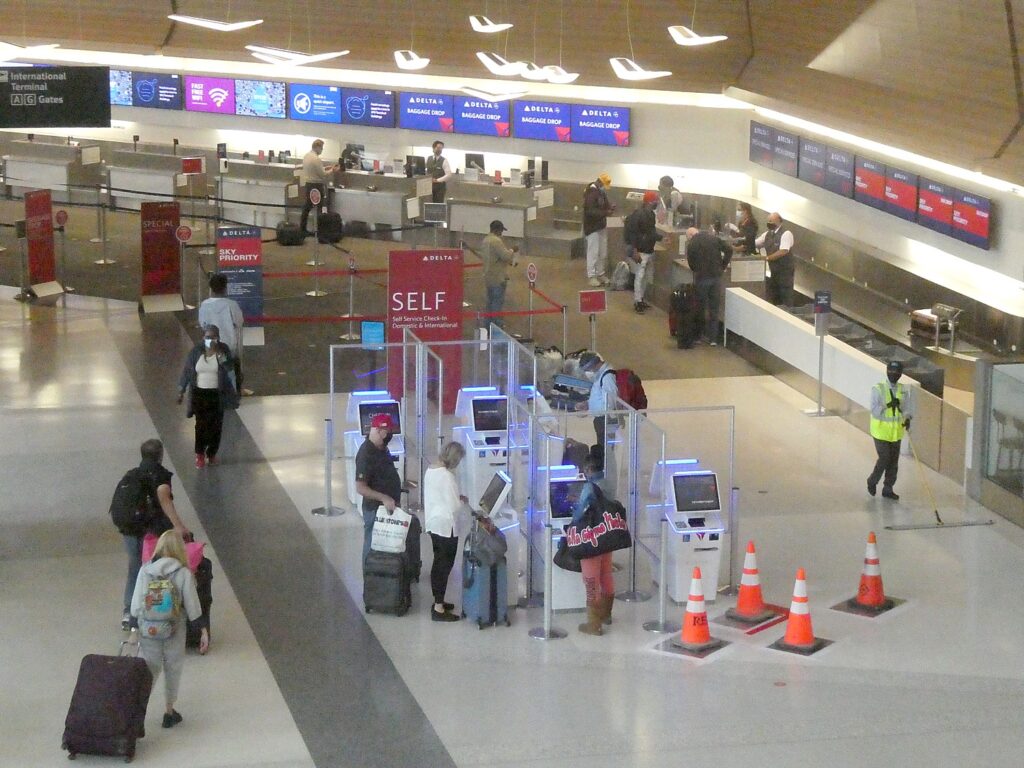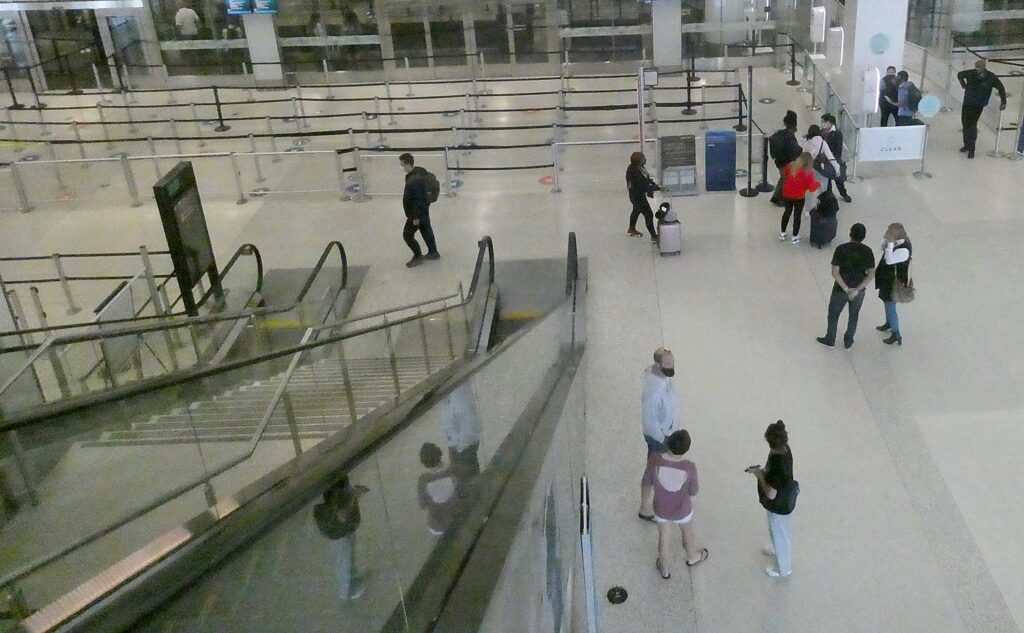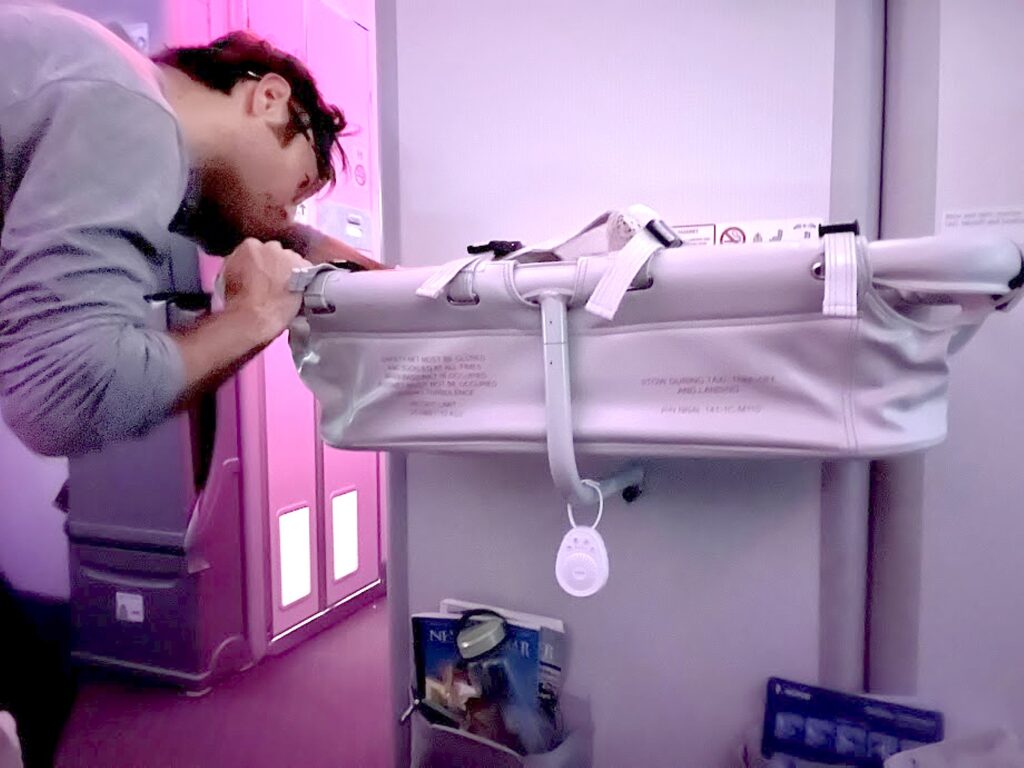
By Laini Miranda and Dave E. Leiberman, Travel Features Syndicate, goingplacesfarandnear.com
We decided 9 months was a perfect age to take our baby on her first overseas trip. Having always wanted to travel in Greece, we were pleasantly surprised at the inexpensive plane tickets on Norse Atlantic Airways, even in August. So after a bit of due diligence and comparison shopping, we booked a 10-day trip on the relatively new, low-cost international airline, and hoped for the best!

Norse Atlantic Airways began operation in summer 2022, replacing Norwegian Air with low cost flights between major cities around the world. They regularly offer sales and, in non-peak season, you can find incredibly cheap fares, like NYC to London for $306, or Los Angeles to Paris for $418. They regularly have “Early Bird Fares” between the US and Europe from just $109 one way. The airline is able to maintain these deals by limiting the amenities on the flight, offering upgrades and other extras for additional fees. (The airline has just introduced a policy of allowing a 22 lb. carry on, in addition to the personal under-the-seat item, at no extra charge on all economy light bookings.)
On our nonstop flight from NYC (JFK) to Athens, we paid just over $800/each for a basic economy fare with taxes and fees, plus $90 for an infant ticket (holding her on our lap), and $45 for each carry-on. We did not check bags nor splurge for meals ($30 for first meal after takeoff and another $30 for a meal before landing), premium seat upgrades, or online check-in. The company was generous to offer us bulkhead seats with bassinet (there are 2 seats with bassinet compatibility on each plane). Seat selection typically starts at $45 (of course you will be assigned a seat at no charge once you check-in at the airport if you do not want to pay to pre-select). It’s worth noting that a few days before the flight, Norse sent out several emails about “bidding” for an upgrade to a seat in the premium section, which offers larger and more comfortable seats with more legroom, meals, blankets, etc.
Even though we were used to online check-ins and going straight to our gate, the check-in process at the airport was smooth, despite the long line. For our 2-week trip with the 2 of us and our 9-month old, we took 2 carry-on suitcases, 2 backpacks (diaper bag plus one smaller backpack with a mini guitar), our stroller, car seat, and small cooler bag for breast milk. We had no problem carrying all of this through security and onto the plane; we gate-checked our stroller and car seat.
Norse leaves from Terminal 7, which seemed like the smallest and most run-down of any JFK terminal we’ve seen. There were few food options and long lines at all of them, so we were happy to have packed snacks. Our flight was on time and boarding was easy. The Norse flight attendants were very helpful in assisting with getting our suitcases in the high overhead bins. The plane itself (Boeing 787 Dreamliners) felt new and similar to the JetBlue planes we’ve flown, with colored LED club-like mood lighting, fancy dimming windows, and leather seats.

On our flight to Athens, we sat in 27D and E, bassinet compatible bulkhead seats in the middle line of the economy section of the plane. They offered much more legroom, which was clutch with a lap infant. The only drawback is that with the extra room and central location between the restrooms, people tended to use this as a thruway between the bathrooms on either side of the plane. We should note, though, that the flight attendants made repeated announcements reminding people not to do this.
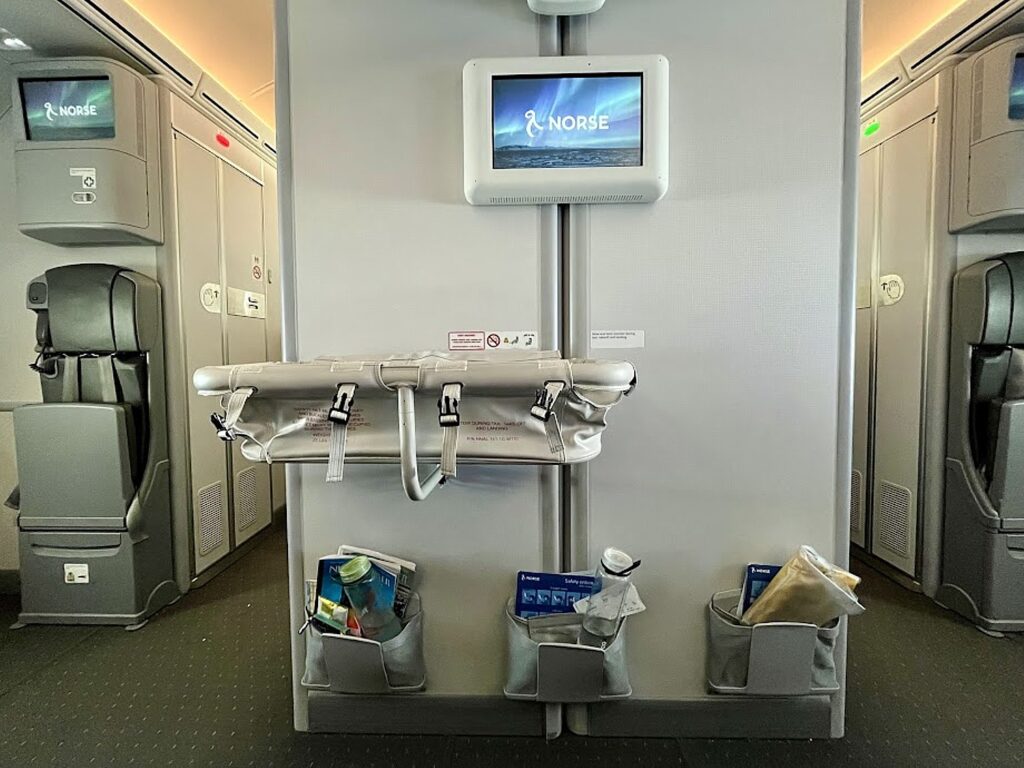
Shortly after takeoff, a flight attendant set up the bassinet for us, which cleverly affixes to the wall. The bassinet is compact with a leather panel over top that Velcros closed for safety. The bassinets are rated for use up to 25 pounds, but it was a little too snug for our nine month old, who is on the smaller side at just 16 pounds. We did notice on our return flight another couple sitting in that same seat with a younger infant and we saw them successfully transfer their sleeping baby to the bassinet. We may have been able to use it if our little one didn’t love moving around in her sleep so much, as there really wasn’t room for her to even put her arms out. She did, however, enjoy playing in it for a little bit.
On the flight home from Athens our seats (11H with bassinet) were on the right side of the plane, so no one needed to walk into our legroom except the one person sitting in the same row in the window seat. This was an even better spot for us because our baby was able to move around on the floor in our little corner of the plane. We actually didn’t even end up using the bassinet on this leg because it had proven too small for her on the way over, and she was fine between our laps with our extra legroom seats and the space in front of us to move.
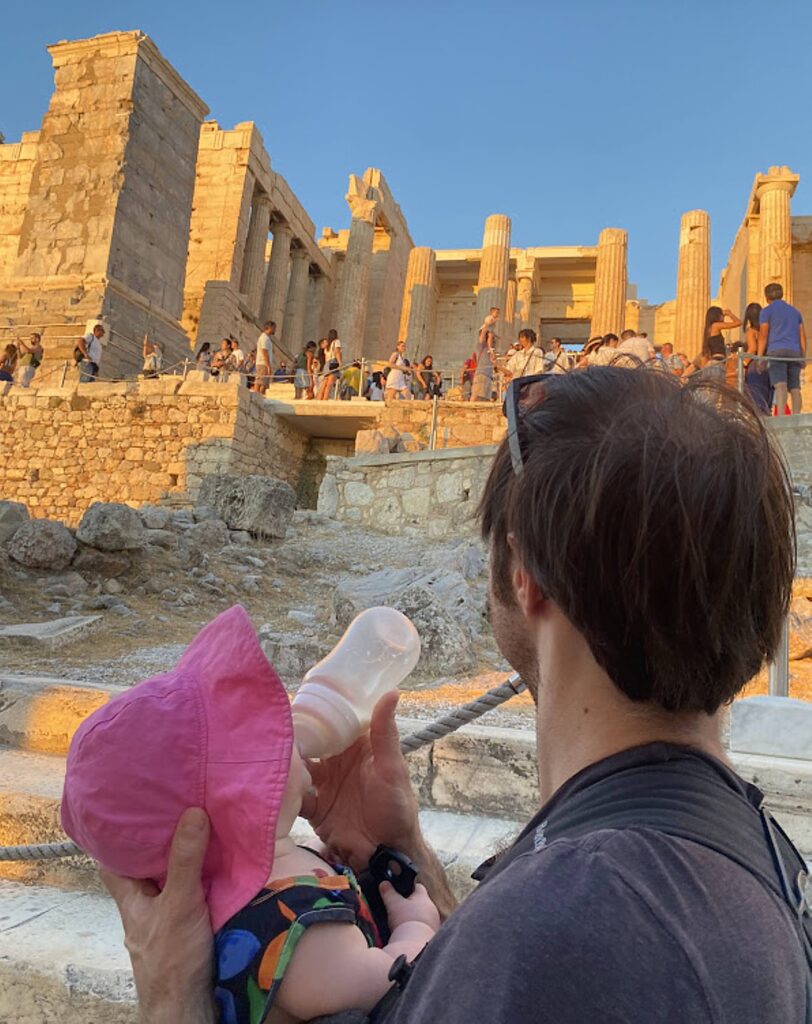
Traveling with an infant ended up being so much easier than we had expected. During our trip to Greece, we took four flights and two ferries. We got preferential treatment at almost all of these, as families often have a dedicated line that gets served before others.
The airports and crews in Greece were all especially friendly to us seeing we had a baby, helping us get her through check-in and security as fast and easily as possible. There are large family bathrooms next to all regular restrooms.

On our Aegean Air flights, the attendants even gave us a couple of little baby toys.
The crew on the ferries guided us to an area to leave our stroller, that we had loaded with some other belongings, in a safe corner. And on one with particularly rocky conditions, they led us to the front of the middle section, apparently “better for babies”. It should be noted that while the outside decks of the ferries offer a lovely view, often they are quite smoky since smoking is not allowed inside (and is still extremely prevalent in Greece). We appreciated the Business Class seats we had reserved for our 3 ½-hour ferry, where we could spread out on comfortable recliners in a more open area and have direct access to the food bar without lines. At the end of this longer ferry, a very kind crew member who did not speak much English directed us to follow him with our belongings as he led us into an elevator that let us out at the very front of the boat, making us the first ones off and onto dry land.

The Greek people in general were extremely kind and welcoming to us, always stopping to talk and play with our baby wherever we went. On top of the generosity of the locals, the gear we brought was also helpful in making this a seamless and easy trip with an infant.
We loved our Aer+ stroller that is lightweight, can fold up instantly with one hand, and can fit compactly in the trunk of any taxi or tiny rental car (or even in the overhead compartment of the plane if you need to bring it on board). Our Nuna Pipa Lite car seat and base are as lightweight as they come, and easily inserted into Ubers and rental cars within seconds. We purchased a car seat bag from Amazon in which we loaded the car seat and base into along with all of our diapers and a few other nick nacks before boarding each plane. In the airports we actually ended up carrying her in our Babybjorn carrier and wheeled the stroller/car seat combo with the base and car seat bag set on top. Families are allowed to board first, but we generally opted to wait until the end of boarding so as to minimize time on the plane. We wheeled everything down the gate and loaded the car seat and base into its backpack and collapsed the stroller to gate-check them right before we boarded, and collected them at the gate upon arrival at our next location.
All of our lodgings in Greece—hotels and airbnbs alike—provided free porta-cribs and linens, which saved us a huge amount of bulk and weight when traveling. We also brought along an ultra lightweight umbrella which we used everyday and was invaluable for protecting baby’s skin from the sun, and another essential: a travel white noise machine.
We landed back in New York 15 minutes early.
Being frequent travelers, we were nervous that our globetrotting lifestyle would have to significantly change once we had a baby. But what struck us most throughout our 10 days in Greece was how traveling with an infant can really enhance our time abroad. We realized we so much more deeply experienced everything from sunsets to meatballs, as if it were our first time, as it was for her.
Norse Atlantic Announces All Light Economy Fares Include 22lb Carry-On
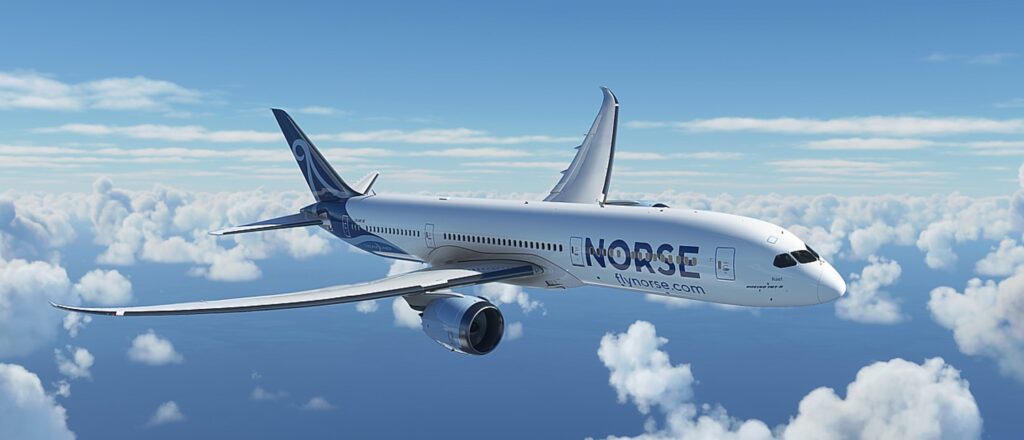
Norse Atlantic Airways has introduced a new policy where all economy light bookings now also include a 22-pound carry-on bag in addition to the personal under seat item, offering customers even greater value and convenience than before. The included carry-on bag policy only applies to bookings made from September 2, 2024, and directly on the flynorse.com website, no matter whether the ticket was purchased as part of the sale. For bookings made via a third party, different rules may apply.
“We’re pleased to announce that all Economy Light tickets now come with a 22 pound cabin bag included, at no extra cost. At Norse Atlantic Airways, we’re always looking for ways to enhance your travel experience, and this sale is the perfect opportunity to plan your next adventure,” said Bård Nordhagen, Chief Commercial Officer Norse Atlantic Airways.
Norse Atlantic exclusively operates Boeing 787 Dreamliner aircraft. The cabin offers passengers relaxed and comfortable flying, with each seat including a personal, state-of-the art entertainment experience. Norse Atlantic offers two cabin choices, Economy and Premium (Premium offers an industry-leading 43” seat pitch and 12” recline).
Passengers can choose from a simple range of fares, Light, Classic and Flextra, that reflect the way that they want to travel, and which options are important. Light fares represent Norse’s value option, while Flextra fares include the maximum baggage allowance, two meal services, an enhanced airport and onboard experience and increased ticket flexibility.
For more information and to book, visit the Norse Atlantic Airways website www.flynorse.com
_______________________
© 2024 Travel Features Syndicate, a division of Workstyles, Inc. All rights reserved. Visit goingplacesfarandnear.com and travelwritersmagazine.com/TravelFeaturesSyndicate/. Blogging at goingplacesnearandfar.wordpress.com and moralcompasstravel.info. Visit instagram.com/going_places_far_and_near and instagram.com/bigbackpacktraveler/ Send comments or questions to FamTravLtr@aol.com. Tweet @TravelFeatures. ‘Like’ us at facebook.com/NewsPhotoFeatures
